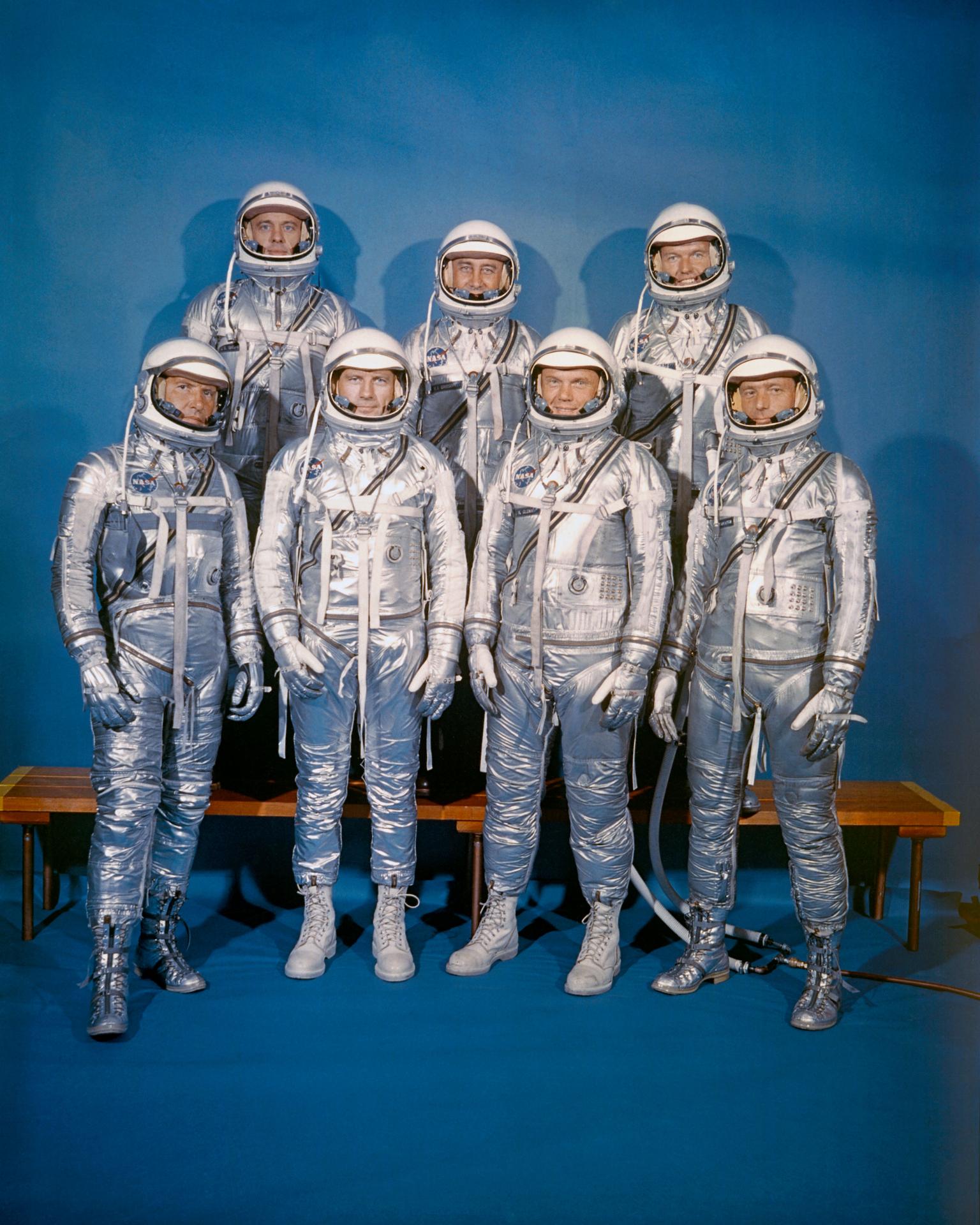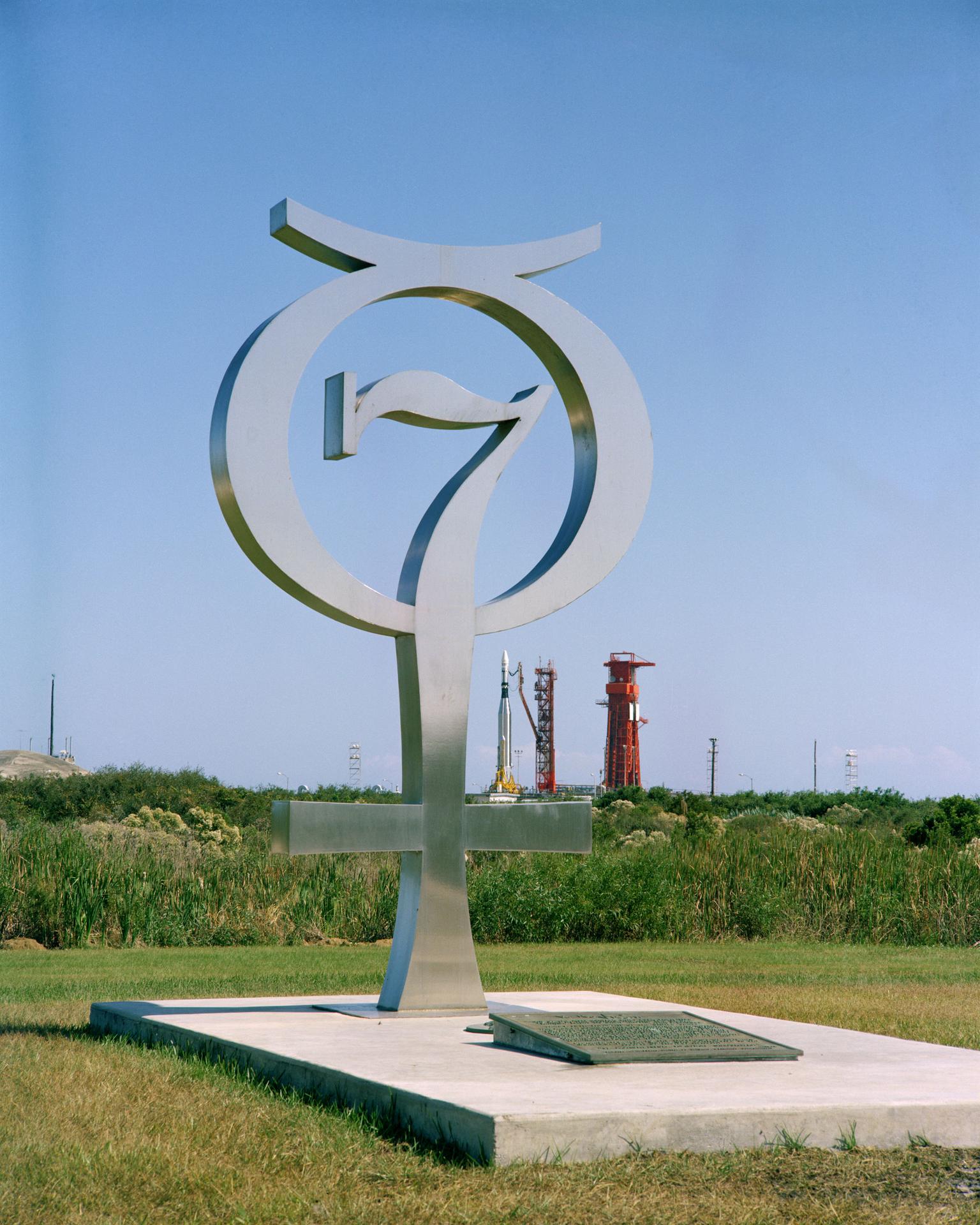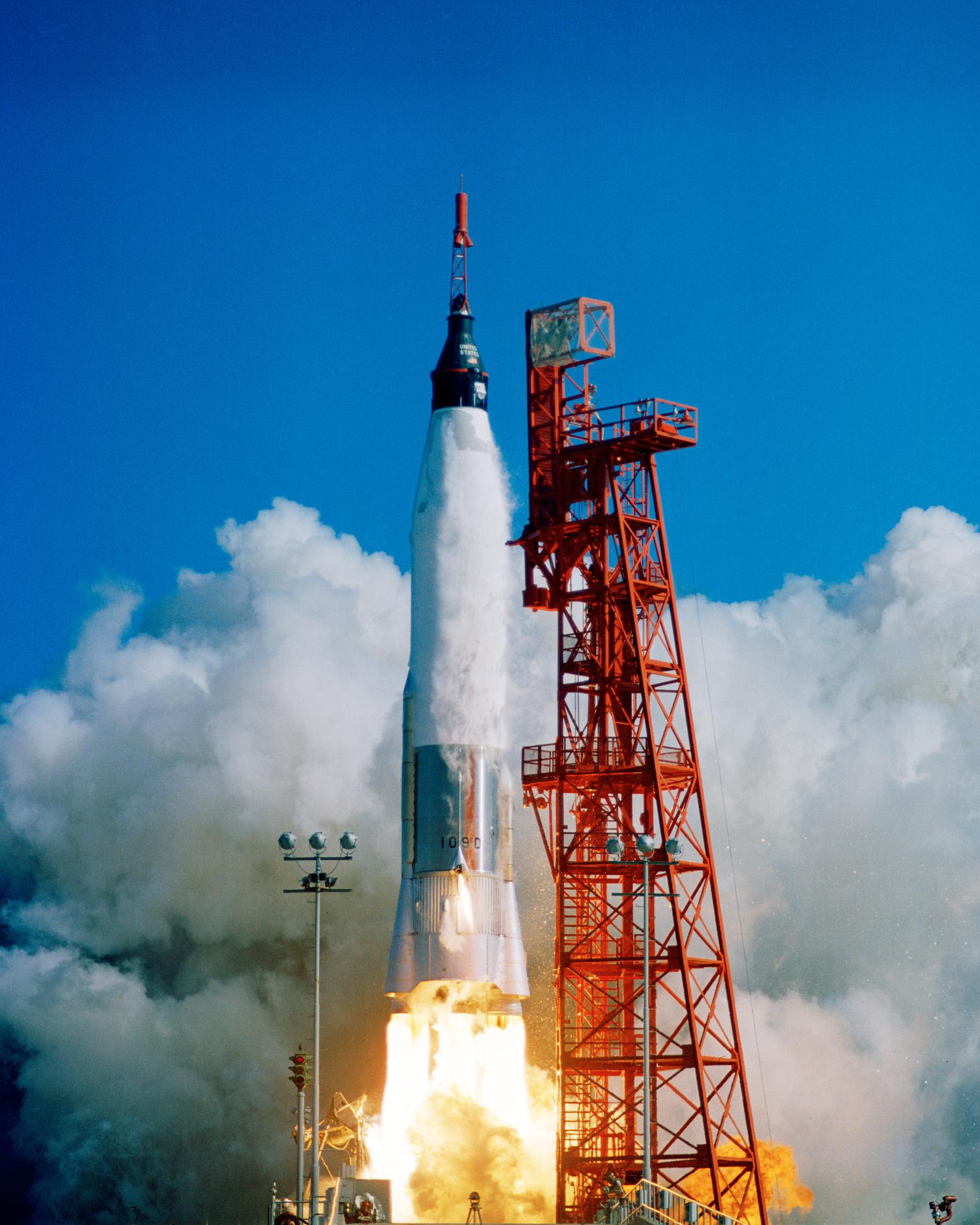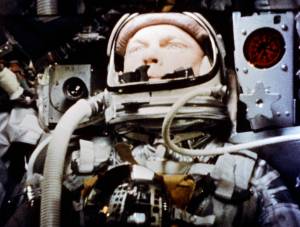- Introduction
- Objectives and Guidelines
- Astronaut Selection
- Summary

The objectives of the Mercury Project, as stated at the time of project go-ahead, were as follows:
- Place a manned spacecraft in orbital flight around the earth.
- Investigate man’s performance capabilities and his ability to function in the environment of space.
- Recover the man and the spacecraft safely.
After the objectives were established for the project, a number of guidelines were established to insure that the most expedient and safest approach for attainment of the objectives was followed. The basic guidelines that were established are as follows:
- Existing technology and off-the-shelf equipment should be used wherever practical.
- The simplest and most reliable approach to system design would be followed.
- An existing launch vehicle would be employed to place the spacecraft into orbit.
- A progressive and logical test program would be conducted.
More detailed requirements for the spacecraft were established as follows:
- The spacecraft must be fitted with a reliable launch-escape system to separate the spacecraft and its crew from the launch vehicle in case of impending failure.
- The pilot must be given the capability of manually controlling spacecraft attitude.
- The spacecraft must carry a retrorocket system capable of reliably providing the necessary impulse to bring the spacecraft out of orbit.
- A zero-lift body utilizing drag braking would be used for reentry.
- The spacecraft design must satisfy the requirements for a water landing.
It is obvious by a casual look at the spacecraft that requirements (1), (3), and (4) were followed as evidenced by the escape tower, the retrorocket system on the blunt end of the spacecraft, and the simple blunt-body shape without wings. Items (2) and (5) have been made apparent by the manner in which the astronaut has manually controlled the attitude of the spacecraft during orbital maneuvers, retrofire, and reentry, and by the recovery of the spacecraft and astronauts after each flight by recovery forces which included aircraft carriers and destroyers. Basically, the equipment used in the spacecraft was derived from off-the-shelf equipment or through the direct application of existing technology, although some notable exceptions were made in order to improve reliability and flight safety. These exceptions include:
- An automatic blood-pressure measuring system for use in flight.
- Instruments for sensing the partial pressures of oxygen and carbon dioxide in the oxygen atmosphere of the cabin and suit, respectively.
Some may argue with the detailed way in which the second basic guideline of simplicity was carried out; however, this guideline was carried out to the extent possible within the volume, weight, and redundancy requirements imposed upon the overall system. The effect of the weight and volume constraints, of course, resulted in smaller and lighter equipment that could not always be packaged in an optimum way for simplicity.
Redundancy probably increased the complexity of the systems more than any other requirement. Because the spacecraft had to be qualified by space flight first without a man onboard and then because the reactions of man and his capabilities in the space environment were unknown, provisions for a completely automatic operation for the critical spacecraft functions were provided. To insure reliable operation, these automatic systems were backed up by redundant automatic systems.
The third guideline was satisfied by an adaptation of an existing missile, the Atlas. The modifications to this launch vehicle for use in the Mercury Project included the addition of a means to sense automatically impending catastrophic failure of the launch vehicle and provisions to accommodate a new structure that would form the transition between the upper section of the launch vehicle and the spacecraft. Also, the pilot-safety program was initiated to insure the selection of quality components.
We set sail on this new sea because there is new knowledge to be gained, and new rights to be won, and they must be won and used for the progress of all people. For space science, like nuclear science and all technology, has no conscience of its own. Whether it will become a force for good or ill depends on man, and only if the United States occupies a position of preeminence can we help decide whether this new ocean will be a sea of peace or a new, terrifying theater of war.2
John F. Kennedy
Rice University Stadium
Houston, Texas
September 12, 1962
CHAPTER TWO, “Exploring the Human Factor” (1948–1958)
The development of the large liquid-fueled rocket made the dazzling prospect of manned flight beyond Earth’s atmosphere and into the vacuum of space increasingly feasible from the standpoint of propulsion. By 1950, however, only instrumented sounding rockets, fired to ever higher altitudes in both the United States and the Soviet Union, had reached into space before falling earthward. Although a number of these experimental shots carried living organisms (everything from fungus spores to monkeys in the United States, mainly dogs in the U.S.S.R.) the data acquired from telemetry and from occasional recovery of rocket nose cones had not shown conclusively how long organisms could live in space, or indeed whether man could survive at all outside the protective confines of his atmosphere. Scientists still were hesitant to predict how a human being would behave under conditions to be encountered in space flight. Thus while space flight became technologically practicable, physiologically and psychologically it remained an enigma. In the early 1950s an acceleration of efforts in upper-atmospheric and space medical research accompanied the quickened pace of rocket development in this country and in the Soviet Union. During the next few years medical specialists, profiting from substantial progress in telemetering clinical data, learned a great deal about what a man could expect when he went into the forbidding arena of space. Much of the confidence with which the engineers of Project Mercury in 1958 approached the job of putting a man into orbit and recovering him stemmed from the findings of hundreds of studies made in previous years on the human factors in space flight.
Since the National Advisory Committee for Aeronautics was interested almost exclusively in the technology of flight, research in the medical problems of space flight, like aviation medicine in previous decades, was the province primarily of the military services and of some civilian research organizations receiving funds from the military. Of the three services, the United States Air Force, rich in background in aeromedical research and assuming that space medicine was but an extension of aviation medicine, undertook most of the early inquiry into the psycho-physiological problems of extra-atmospheric flight.
* 2. Also, the Previous are excerpts from “This New Ocean, A History of Project Mercury,” NASA SP-4201, by Loyd S. Swenson, Jr., James M. Grimwood, and Charles C. Alexander. This book was printed in 1966, and it was for sale by the U.S. Government Printing Office. Library of Congress Catalog Card Number is 66-62424.)































